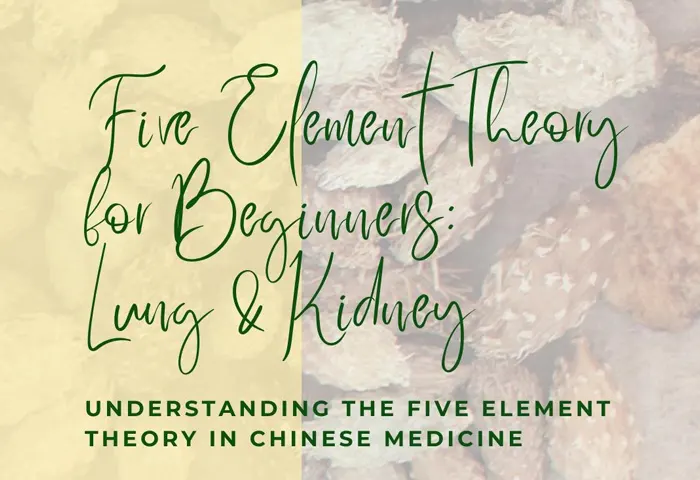Five Element Theory for Beginners: Lung & Kidney Connection
Understanding the Lung-Kidney Connection in Five Element Theory
Five element theory is a foundational concept in Chinese Medicine that views the body as an interconnected system, where each part works together to maintain balance and health. This theory includes five elements: Wood, Fire, Earth, Metal, and Water. Each element corresponds to specific organs, emotions, and natural cycles, providing a framework for understanding harmony within the body.
Today, we focus on the Metal element, represented by the lungs, and the Water element, represented by the kidneys, exploring how these two organs collaborate to keep the body strong and balanced according to five element theory.
The Role of the Lungs: Metal Element
The lungs, part of the Metal element, act as the body’s energy manager. Every breath brings in fresh air (oxygen), sending vital energy throughout the body to support essential functions. In five element theory, the lungs work closely with their partner organ, the large intestine, ensuring energy and waste are properly processed. This teamwork is critical for maintaining health, balance, and vitality.
The Connection Between Metal and Water in Five Element Theory
Within five element theory, Metal supports Water. This relationship can be visualized as molten metal cooling and forming water vapor—Metal naturally nurtures Water.
In the body, the energy generated by deep, healthy breathing helps power the kidneys. For example:
-
Deep breaths create gentle pressure changes that massage the kidneys, enhancing their function.
This connection highlights the importance of breathing practices for supporting overall health through five element theory.
The Kidneys: The Role of the Water Element
The kidneys, part of the Water element, serve as the body’s filters, cleansing the blood and maintaining steady energy. They also store “jing” energy, which acts as the body’s battery, powering vitality and longevity.
When the lungs and kidneys work in harmony, as described in five element theory, the body feels balanced, strong, and resilient.
How Stress Disrupts the Lung-Kidney Connection
Modern life often brings constant stress, leading to shallow, rapid breathing. According to five element theory, when this happens:
-
The connection between the lungs and kidneys weakens.
-
The body struggles to maintain balance, resulting in fatigue or feeling overwhelmed.
To restore this balance, five element theory recommends a technique called kidney breathing.
What Is Kidney Breathing?
Kidney breathing is a simple yet powerful practice that promotes deep breathing, reduces stress, and strengthens the lung-kidney connection within the framework of five element theory.
How to Practice Kidney Breathing:
-
Get Comfortable: Sit, lie down, or stand in a quiet space.
-
Place Your Hands: One hand on your chest, one on your belly.
-
Breathe Deeply: Inhale through your nose, allowing your belly (not your chest) to rise.
-
Visualize: Imagine your breath flowing down to your kidneys, gently massaging them.
-
Repeat: Practice for a few minutes daily to reduce stress and restore balance.
Over time, kidney breathing can help your body manage stress, boost energy levels, and improve overall well-being, all principles supported by five element theory.
Why Does This Matter?
The five element theory offers a unique perspective on how the body functions as a unified system. The relationship between the lungs (Metal) and kidneys (Water) exemplifies this teamwork.
By practicing kidney breathing, paying attention to your breath, and understanding these connections through five element theory, you can:
-
Support your body’s balance.
-
Reduce stress and fatigue.
-
Improve your overall physical and mental health.
Start today: Breathe deeply, reconnect with your body, and experience the benefits of this ancient wisdom in your daily life.
Interested to know and learn more? Join our 8-week workshop on moving meditation!

